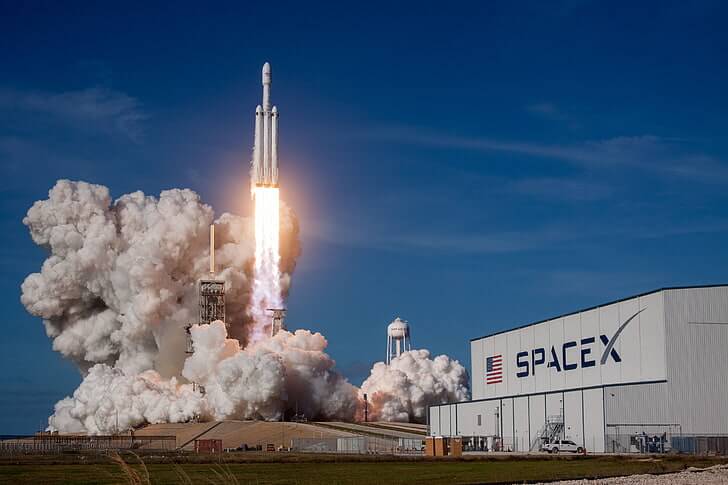By Cameron Duke | Live Science
A powerful geomagnetic storm has doomed 40 Starlink satellites launched by SpaceX last week, the company has announced.
Elon Musk‘s company launched a Falcon 9 rocket bearing the 49 satellites from Kennedy Space Centre in Florida on Thursday (Feb. 3), but a geomagnetic storm that struck a day later sent the satellites plummeting back toward Earth, where they will burn up in the atmosphere.
“Unfortunately, the satellites deployed on Thursday were significantly impacted by a geomagnetic storm on Friday,” SpaceX said in a statement.
“Preliminary analysis show[s] the increased drag at the low altitudes prevented the satellites from leaving safe mode to begin orbit-raising manoeuvres, and up to 40 of the satellites will reenter or already have re-entered the Earth’s atmosphere.”
Geomagnetic storms occur when a surge of solar wind – charged particles from the Sun – smashes into Earth’s magnetic field and generates charged particles and currents in Earth’s upper atmosphere.
The surge warms the upper atmosphere and increases its atmospheric density such that the drag experienced by satellites in low Earth orbit can be enough to send them tumbling back to Earth. The geomagnetic storm experienced by the satellites came from solar wind kicked out by a January 30 coronal mass ejection – an eruption of the Sun.
After launch, the 49 SpaceX satellites began orbiting as close to 130 miles (210 kilometres) from Earth. This low orbit was intentionally designed to make the satellites easily disposable in the event of a post-launch failure, but the low orbit also left them vulnerable to the geomagnetic storm.
SpaceX said in the statement that the satellites’ GPS systems show the storm caused atmospheric drag to “increase up to 50 per cent higher than during previous launches.” In response, the satellites were commanded to “take cover from the storm” by flying “edge-on (like a sheet of paper)”.
This “edge-on” positioning, by decreasing the surface area of the satellite passing through the atmosphere, was an attempt to halt the rapid deceleration of the satellites.
But the drag was too much. Forty of the satellites are now set to plummet back to Earth. SpaceX assures the public that, because the company’s satellites are designed to disintegrate upon re-entry, “no orbital debris is created and no satellite parts hit the ground”.
Since the first Starlink satellites were launched in 2019, SpaceX has put 2,000 of them into Earth orbit, and the company plans to place as many as 42,000 satellites into an Earth-orbiting mega-constellation.
The Starlink program would give customers high-speed internet service from anywhere in the world, but it has come under sustained criticism from astronomers because its shiny satellites often leave bright streaks in the night sky, ruining astronomical observations.
A 2021 study showed that the 9,300 tons (8,440 metric tons) of space objects currently orbiting Earth, including inoperative satellites and chunks of spent rocket stages, have increased the overall brightness of the night sky by more than 10%, rendering large parts of Earth light-polluted, Live Science previously reported.
Critics also say these SpaceX satellites clog up near-Earth orbital slots that could be used by other companies or countries.
Space experts have even warned that once the first 12,000 satellites of Starlink’s first-generation constellation are in orbit, they could become responsible for up to 90% of near misses between two spacecraft in low Earth orbit, Live Science sister site Space.com reported.
In December 2021, the director general of the European Space Agency, Josef Aschbacher, said Musk was “making the rules” in space, and he called for the European Union and other countries to coordinate so that SpaceX’s satellites did not prevent others from launching their own.
This article was originally published by Live Science.

